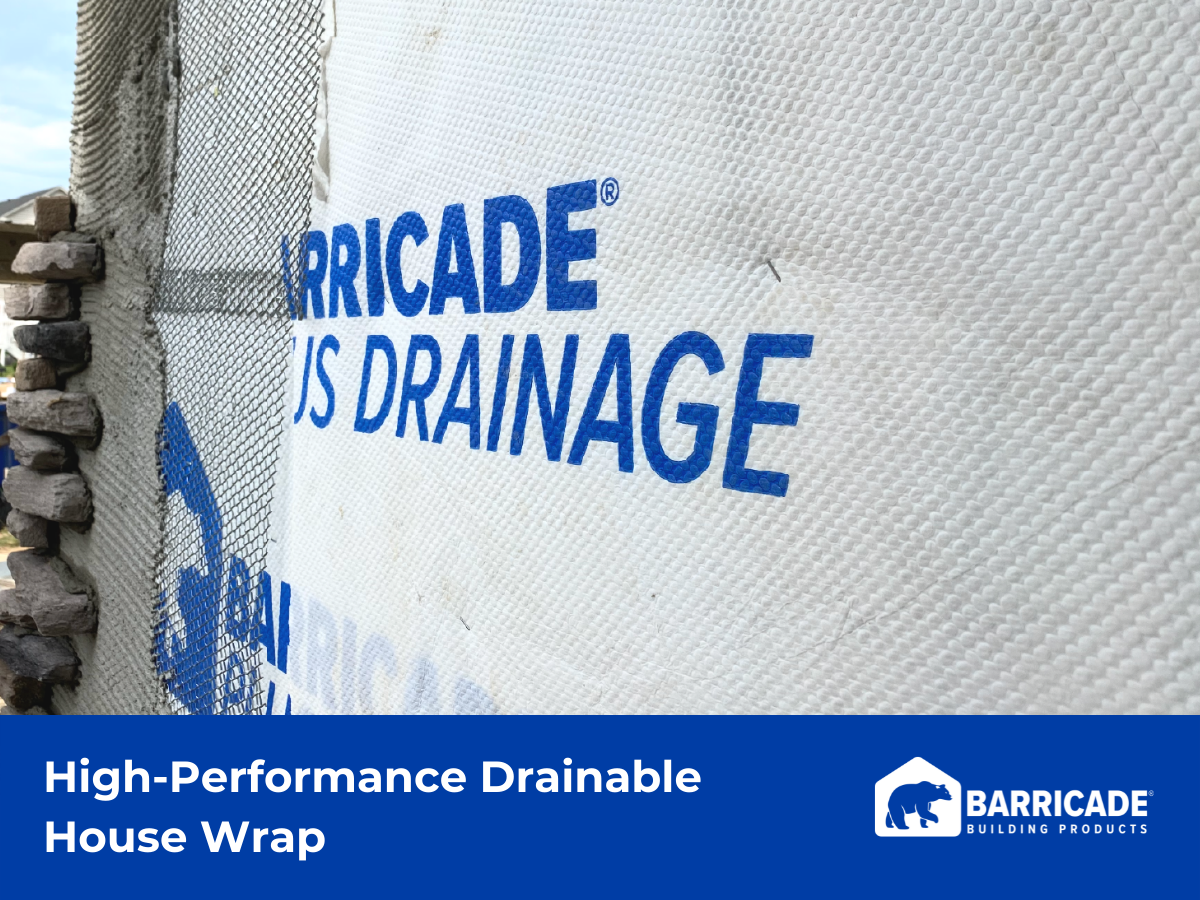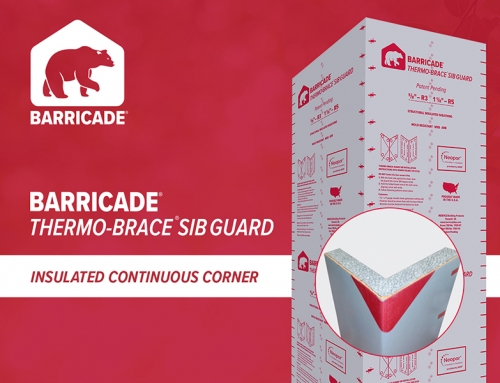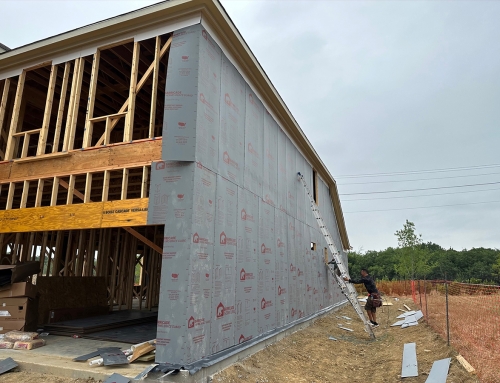Proper weather barrier installation is key to keeping stucco homes moisture-free.
Homes clad with stucco are especially popular in warm and mostly dry climates across the country. Combining cement, water, and sand in the right proportions creates stucco, an inexpensive exterior layer that is fire resistant and it doesn’t need to be painted every three years. But stucco also has a dark side. It can be prone to cracking in geographic areas with an abundance of clay in the soil where the ground still settles. New renditions of stucco blends in polymers to make it more flexible but the biggest rap against stucco over the years is that sometimes, it leaks.
Stucco is by its nature a porous material. Rainwater is easily absorbed or blown through stucco walls by the wind. Doors and windows on a stucco house that haven’t been flashed properly are an area of concern. If water gets in between the stucco and the interior walls, it becomes a problem. Building codes regulating how stucco walls are to be constructed and insulated can vary by state and municipality. Leaky stucco houses made a lot of headlines in the 1990’s and since then building inspectors, builders, local codes, suppliers, and common sense stepped in to fix the problem.
Best Practices
Michael Sroka is a realtor based in Conshohocken, PA, which is a suburb of Philadelphia and not an area known for warm and dry conditions. Sroka also writes for Home Experts for You, a blog that covers subjects like stucco gone bad and what to do about it. Here’s his take on the best way to do stucco in his neck of the woods.
“Typically, houses in the Northeast are framed with wood. In order to protect the framing wood from rot, stucco homes have two layers of a weather-resistant barrier (WRB), covered with three layers of stucco, a scratch coat, a brown coat, and a top coat. These three layers of stucco provide maximum protection and resistance to cracking.
Trying to skip a layer, taking a shortcut or a lapse in building science can cause big problems on stucco construction. “Most of the systems installed in the Northeast consist of only 2 layers of stucco with only one layer of WRB,” said Sroka. “Additionally, it was found that over fifty percent of leaks in homes are from improperly flashed windows, and thirty percent of leaks in homes are caused by lack of flashing details known as “kickout diverters.”
According to ASTM International, formerly known as the American Society for Testing and Materials, the rules for using stucco in Florida mimic what’s happening in Pennsylvania, but with an extra ingredient. Their specs say there must be two layers of a WRB with a bond break designed to stop water from moving between layers.
The International Masonry Institute lists its preferred layers of correct stucco application as (going from inside to outside), concrete masonry unit (CMUs), Z-channel furring, rigid insulation, plywood or oriented strand board (OSB) sheathing with a 1/8” gap between the sheets at horizontal and vertical joints, two layers of WRB, then self-furring lath followed by three coats of stucco.
Barricade’s Barrier
Barricade Building Products based in Doswell VA, noticed the issue of leaky stucco fifteen years ago and developed Wrap Plus Drainage Wrap, a high-performance drainable house wrap specifically designed for stucco-clad homes. Installing a primary layer of felt paper or paper-backed wire lath over a layer of Wrap Plus Drainage Wrap creates the bond break that’s required in Florida. The bond break guarantees a permanent connection between the layers that keeps water from getting into insulation and eventually the house.
Some builders have their own secret sauce when it comes to tweaking the layers for maximum performance. Josh Elliott, technical director for Barricade says, “We have some large national builders that use our Barricade Plus House Wrap over the Drainage Wrap.” Stone, stucco, and fibrous cement applications typically recommend a product that has a ninety percent “drainability” factor. The small, oval-shaped nodules on Drainage Wrap Plus get the product up to the required number and cause the water to drain better than normal house wrap.
Going a step further, Barricade includes a breathable membrane that allows any moisture that does get trapped to pass through as a harmless vapor. According to Darcy Overby, National Sales Manager for Barricade, “If moisture gets trapped in the walls, it can destroy the integrity of the insulation,” she says. “Our unique, micro-porous, breathable membrane allows moisture vapor to pass through without becoming trapped in the wall cavity to provide the utmost in air and moisture control.”
Bulking Up
In addition to the breathability factor, Drainage Wrap Plus also acts as a deterrent for bulk water intrusion which could come in the form of a Florida hurricane or a Nor’easter blowing through Philadelphia. “Barricade drain wrap has a non-directional oval surface pattern that allows bulk water to drain down. It resists water penetration from wind-driven rain and other sources,” says Elliott.
Wrap Plus comes standard in a translucent finish that framing crews can see through which simplifies installation. The WRB coating provides maximum protection from the elements and using any kind of house wrap can help make a home more energy-efficient. “It helps with air intrusion as it functions as an air barrier,” says Elliott. “It also helps the insulation keep its R-value. If moisture gets in the wall the R-value of the insulation drops significantly.”
All of Barricade’s building materials are made in Doswell, Virginia. The house wrap systems, which include wraps, seam tape, window, and door flashings are covered by a ten-year warranty. The wraps can be printed with custom graphics for builders who want a consistent look on their job sites. Whether you are looking for an economical choice, a high-performing product in the middle, a wrap specifically designed for stucco applications, or a more upscale solution, Barricade has you covered.
For more information about Barricade Housewrap or our family of products come visit us at the International Builder’s show this year in Orlando, Florida. Click on the banner below to get a free pass.









